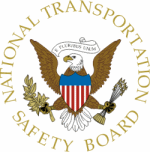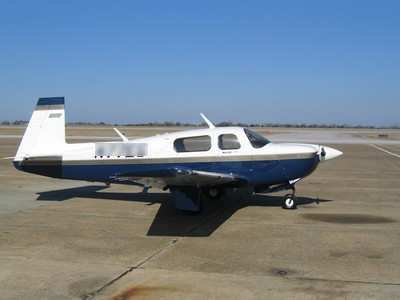Pilot Said He Was Struggling With Mountain Wave Activity
 The preliminary report released by the NTSB concerning a fatal
accident in Wyoming last month indicates that the airplane went
down after the pilot reported mountain wave activity. The pilot and
his three passengers were all fatally injured in the accident.
The preliminary report released by the NTSB concerning a fatal
accident in Wyoming last month indicates that the airplane went
down after the pilot reported mountain wave activity. The pilot and
his three passengers were all fatally injured in the accident.
NTSB Identification: WPR11FA032
14 CFR Part 91: General Aviation
Accident occurred Monday, October 25, 2010 in Lander, WY
Aircraft: MOONEY M20J, registration: N201HF
Injuries: 4 Fatal.
This is preliminary information, subject to change, and may
contain errors. Any errors in this report will be corrected when
the final report has been completed.
On October 25, 2010, about 1352 mountain daylight time (MDT), a
Mooney M20J, N201HF, collided with mountainous terrain near Lander,
Wyoming. The airplane became the subject of a week-long search
after it was lost from ground-based radio communications and radar
tracking facilities about 45 minutes after it departed from Jackson
Hole Airport (JAC), Jackson Hole, Wyoming, on October 25, 2010. On
the afternoon of November 1, 2010, the wreckage was located by
ground searchers at the 11,100-foot level in the Wind River
mountain range, Wyoming. The instrument rated owner/pilot and three
passengers were fatally injured and the airplane sustained
substantial damage. Instrument meteorological conditions likely
existed at the location and time of the accident. The personal
flight was operated under the provisions of Title 14 Code of
Federal Regulations (CFR) Part 91, on an instrument flight rules
(IFR) flight plan and clearance to Pierre, South Dakota.
According to information provided by representatives from
Lockheed Martin (LM) and the Federal Aviation Administration (FAA),
on the morning of the accident, the pilot obtained his initial
telephone weather briefing about 0920 MDT. About 1040, he
telephoned again, obtained an abbreviated weather briefing, and
filed an IFR flight plan. The flight plan included a planned
departure time of 1130, and a destination of Rapid City Regional
Airport, (RAP) Rapid City, South Dakota. The filed route of flight
was Dunoir (DWN) very high frequency omni-range (VOR) navigation
facility, Boysen Reservoir (BOY) VOR, Muddy Mountain (DDY) VOR, and
then direct to RAP. About 1237, the pilot used the Internet to file
another IFR flight plan, which again specified JAC as the
origination airport. The filed departure time was 1247, and the
filed route was DNW VOR, Riverton (RIW) VOR, DDY VOR, Newcastle
(ECS) VOR, Rapid City (RAP) VOR, and Philip (PHP) VOR. The
destination was Pierre Regional Airport (PIR), Pierre, South
Dakota, and the filed altitude was 9,000 feet. Both weather
briefings included AIRMETs (Airmen's Meteorological Information)
for mountain obscuration, turbulence, and icing along the planned
flight routes and altitudes.

Mooney M20J File Photo
The airplane departed JAC just after 1300, and was in
communication with and tracked by FAA air traffic control (ATC) at
Salt Lake City Air Route Traffic Control Center (ARTCC). The first
radar target was recorded about 1309, and the airplane was tracked
until about 1336, when it was at an altitude of 14,000 feet. About
1341, the pilot filed a pilot report via radio, which stated that
he was at 14,000 feet, and was encountering light chop, and a trace
of rime icing. The airplane was re-acquired by ground radar about
1346, still at the same altitude. About 1352, the last radar target
associated with the airplane was recorded, with an indicated
altitude of 13,300 feet. Shortly before that, the pilot radioed to
ATC that he was unable to maintain altitude due to mountain wave
activity.
According to information provided by the Fremont County
Sheriff's Office, ground searchers located the wreckage at an
elevation of 11,100 feet on a scree slope about 6 miles southeast
of Gannett Peak. The wreckage exhibited significant crush and
impact damage. The right wing was partially fracture-separated from
the fuselage, and the propeller blades were fracture-separated from
the propeller hub. All components were located within 20 feet of
the main wreckage.
The pilot held a private pilot certificate with airplane single
land and instrument airplane ratings. The airplane was first
registered to him in January 2010. It was manufactured in 1977, and
was equipped with a non-turbocharged Lycoming IO-360 series
engine.
 ANN's Daily Aero-Term (12.01.25): Convective SIGMET
ANN's Daily Aero-Term (12.01.25): Convective SIGMET ANN's Daily Aero-Linx (12.01.25)
ANN's Daily Aero-Linx (12.01.25) NTSB Final Report: Remos Aircraft GmbH Remos GX
NTSB Final Report: Remos Aircraft GmbH Remos GX Aero-News: Quote of the Day (12.02.25)
Aero-News: Quote of the Day (12.02.25) ANN's Daily Aero-Term (12.02.25): Coupled Approach
ANN's Daily Aero-Term (12.02.25): Coupled Approach




